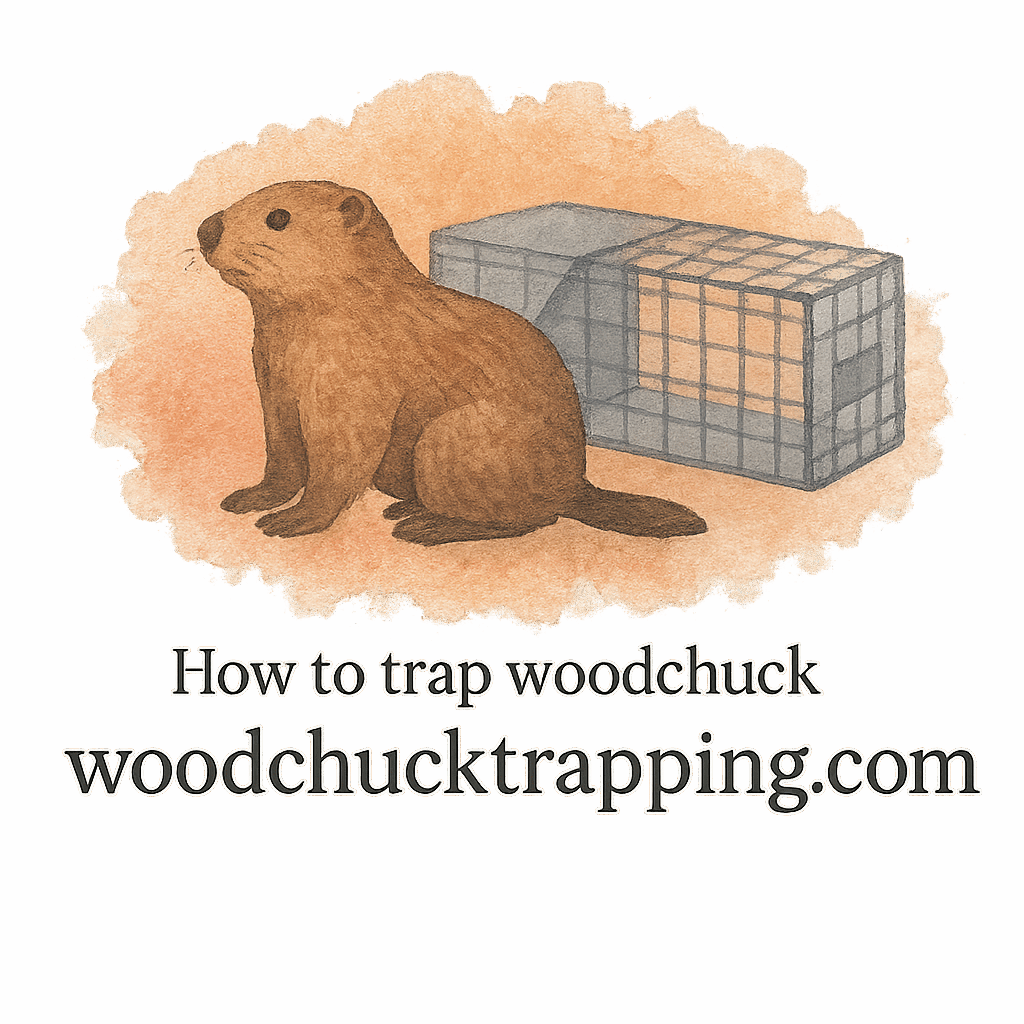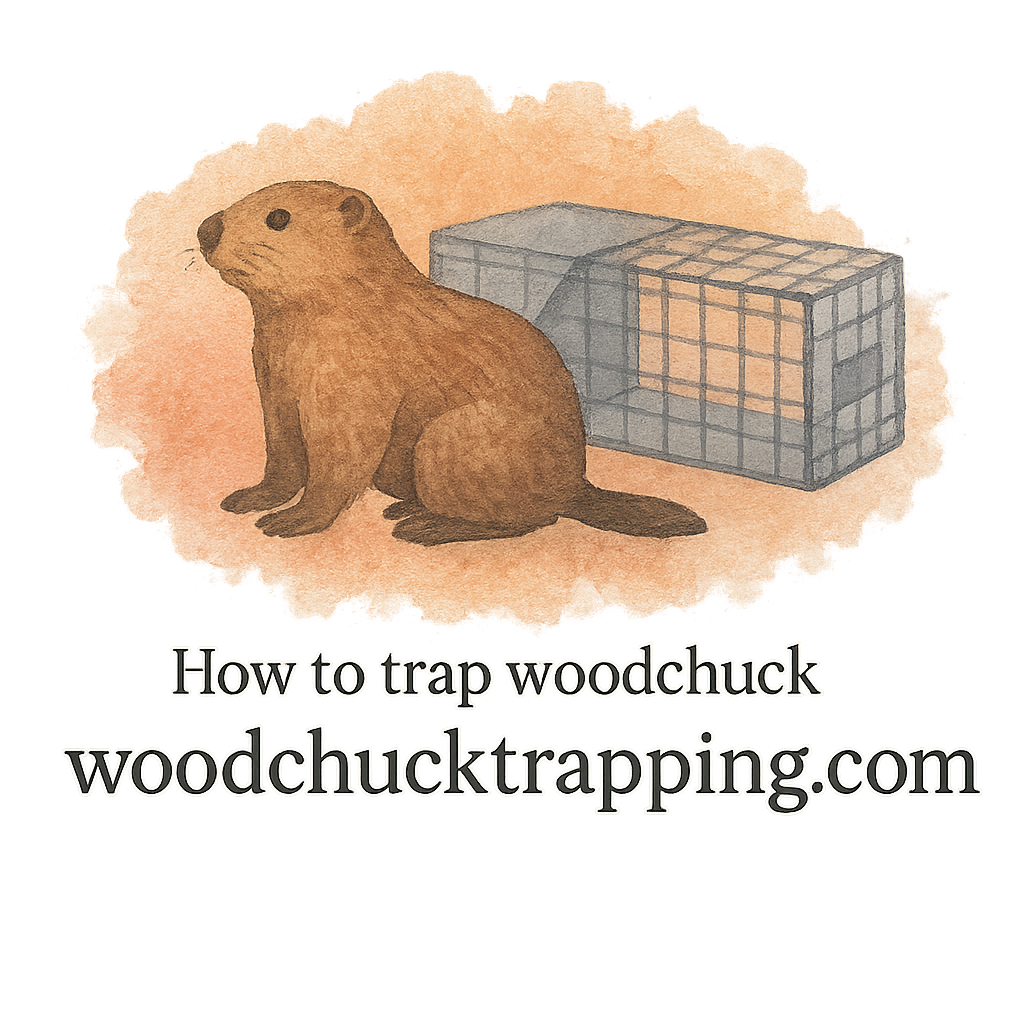Introduction
Woodchucks, also called groundhogs, might look cute at first glance, but if you’ve ever had one burrow under your shed or destroy your garden, you know they’re no joke. Many homeowners rush into trapping without fully understanding the right approach, which often leads to frustration, wasted time, or even legal trouble. In this article, we’ll walk through 11 common mistakes homeowners make with woodchuck trapping techniques and how you can avoid them to protect your yard effectively.
Understanding Woodchucks Before Trapping
Why Woodchucks Become a Problem
Woodchucks are burrowing animals that can quickly tear up lawns, weaken foundations, and destroy gardens. Their tunnels are not only unsightly but also dangerous, as they can destabilize the ground around sheds, decks, or fences. Left unchecked, a single woodchuck can cause significant property damage.
Signs of a Woodchuck Infestation
Before you set a trap, you need to be sure you’re dealing with woodchucks. Look for:
- Large burrow entrances about the size of a football.
- Chewed plants, vegetables, or garden crops.
- Dirt mounds near fences, decks, or sheds.
- Tracks or droppings in the soil.
If you notice these signs, you likely have a woodchuck infestation on your hands.
Common Mistakes in Woodchuck Trapping
Mistake #1: Using the Wrong Trap Size
One of the biggest blunders is buying a trap that’s too small or too big. Woodchucks need compact traps designed specifically for medium-sized animals. Using an ill-fitted trap reduces the chances of success. Check out reliable compact traps that provide a snug and secure catch.
Mistake #2: Ignoring Trap Placement
Placing a trap randomly in the yard won’t work. You must position it near burrow entrances, travel paths, or feeding areas. Woodchucks are creatures of habit, so study their movement patterns before setting your trap. For more guidance, see these proven trapping techniques.
Mistake #3: Overlooking Burrows and Entry Points
A common error is setting traps without considering where the animal lives. Woodchucks spend most of their time around their burrows. If you ignore these entry points, you’re setting yourself up for failure.
Mistake #4: Skipping Proper Baiting and Luring
Traps alone rarely do the job. You need the right baiting and luring strategies. Fresh vegetables like carrots, apples, or leafy greens work well. Pair them with effective scent bait for better results.

Mistake #5: Forgetting About Trap Scent and Human Smell
Woodchucks have sharp noses. If your trap smells like metal, gasoline, or your hands, it will scare them away. Always wear gloves and consider using trap scent to mask odors.
Mistake #6: Using Unsafe or Illegal Trapping Methods
Some homeowners resort to unsafe DIY methods or use equipment banned in their state. This can put you, your pets, and even neighbors at risk. Always check laws and safety guidelines before setting traps.
Mistake #7: Handling a Trapped Animal Incorrectly
Once you’ve caught a woodchuck, the real challenge begins. Mishandling can lead to bites or injuries. Learn safe handling techniques and always approach with caution.
Mistake #8: Relying on Traps Alone Without Prevention
Trapping removes one animal, but if your yard remains inviting, more will come. Combine trapping with prevention and damage control strategies like fencing, habitat modification, and yard cleanup.
Mistake #9: Choosing Cheap or Ineffective Equipment
Not all traps are created equal. Bargain traps often break, fail to trigger, or injure the animal. Read trusted equipment reviews before making a purchase. Quality trap gear pays off in the long run.
Mistake #10: Not Considering Humane Trapping Techniques
Trapping doesn’t have to be cruel. Many homeowners overlook humane techniques that minimize stress for the animal while keeping your family safe. It’s about balance—protecting your property without unnecessary harm.
Mistake #11: Ignoring Local Laws and Safety Guidelines
Each state has different rules regarding relocation and trapping. If you ignore these, you could face fines. Stay informed with local laws and safety resources.
Smarter Alternatives to Avoid Mistakes
Prevention and Yard Protection
Don’t wait for woodchucks to move in. Invest in preventive measures such as garden fencing, repellents, and yard clean-up. Explore more yard damage prevention tips to stay ahead.
Choosing Quality Tools and Gear
Whether you’re dealing with a small yard or a large property, the right tools make all the difference. Choose traps built for durability and reliability.
Following Proven Trapping Techniques
Instead of guessing, stick to proven trapping essentials. Learn how to trap woodchucks effectively with expert advice that saves you time and frustration.
Conclusion
Woodchuck trapping doesn’t have to be a losing battle. By avoiding these 11 mistakes, you’ll save yourself time, money, and stress. Remember, it’s not just about setting a trap—it’s about understanding woodchucks, using the right trapping techniques, following safety guidelines, and preventing future infestations. With the right approach, you can reclaim your yard and enjoy a woodchuck-free property.
FAQs
Q1: What’s the best bait for woodchuck traps?
Fresh vegetables like carrots, apples, and leafy greens combined with lure or scent bait work best.
Q2: Can I trap woodchucks in a minimal space?
Yes, but you’ll need minimal space traps that are compact and efficient.
Q3: Are woodchucks dangerous to humans?
Generally, no—but a cornered or trapped animal may bite if mishandled.
Q4: Should I relocate a trapped woodchuck?
Relocation laws vary by state. Check your local laws and safety guidelines.
Q5: How can I prevent future infestations?
Invest in prevention strategies like fencing, repellents, and yard maintenance.
Q6: Do I need special gloves for handling traps?
Yes, always use protective gloves to mask scent and protect yourself.
Q7: What’s the most common mistake homeowners make?
The most frequent error is poor trap placement and ignoring woodchuck burrows.


